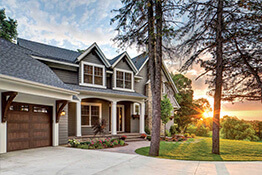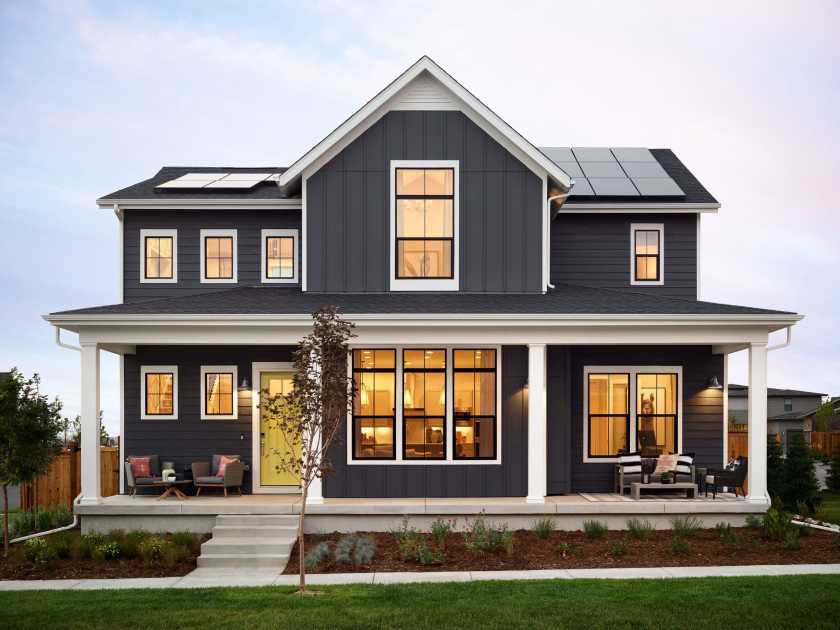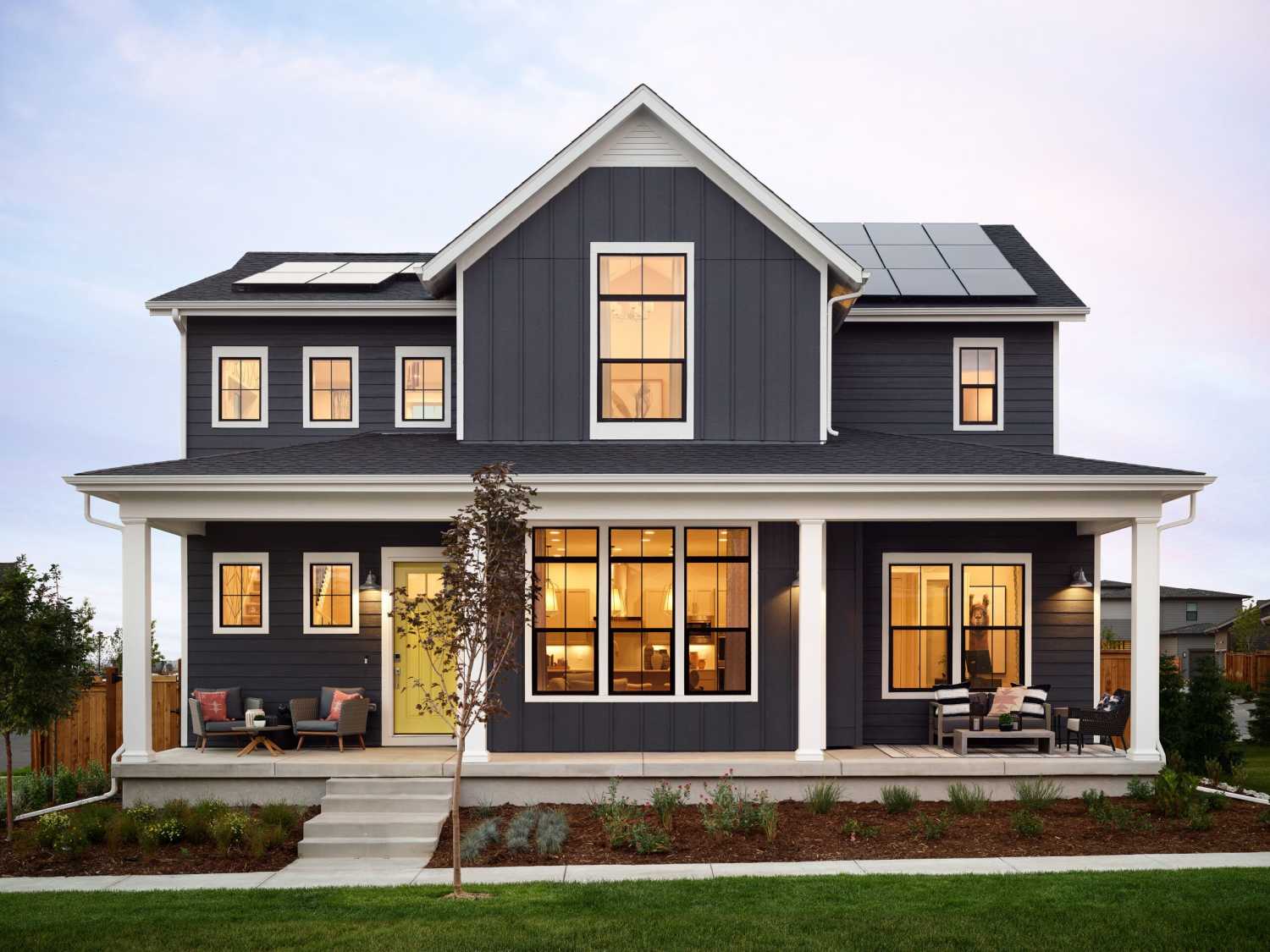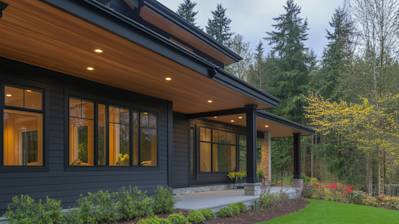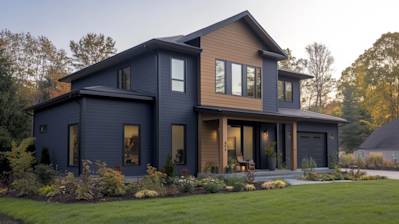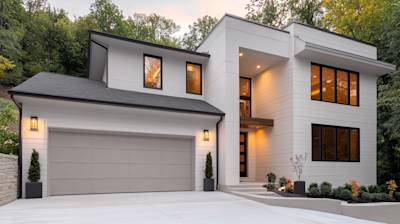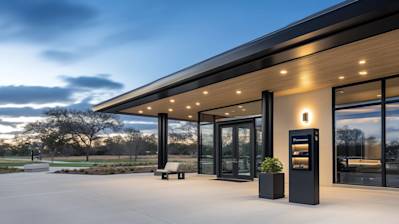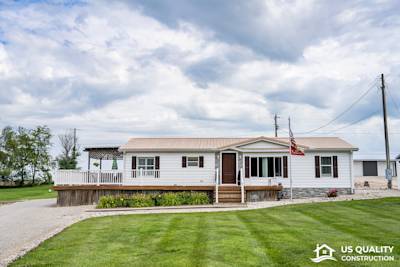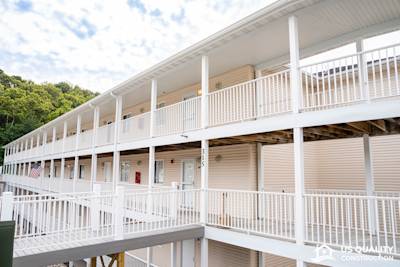Your home's exterior is the first thing visitors notice about your home. Not only does it contribute to your home's curb appeal, but it also plays a pivotal role in shielding the interior from the elements. Selecting the right kind of house siding is crucial as it influences the longevity, aesthetics, and energy efficiency of your home. There are various house siding options available in the market today, with each having its distinct advantages. This expansive article will look at several types of house sidings, explores their features, installation process, and cost to help you make an informed decision.
Popular House Siding Options
When it comes to selecting the perfect siding for your home, the options are endless. Some of the common types of house sidings include:
- Vinyl Siding
- Wood Siding
- Brick Siding
- Metal Siding
- Fiber Cement Siding
- Stone Veneer Siding
Details of House Siding Options
Vinyl Siding
Vinyl siding is a durable and cost-efficient siding option popular among homeowners. It offers a vast array of styles and colors, letting homeowners customize according to their aesthetic preferences. Maintenance falls on the minimal side, as it only requires a clean-up with soap and water once or twice a year. However, it's important to choose a high-quality option, as lower-end vinyl can fade over time or crack during harsh weather conditions.
Wood Siding
For those looking for a classic, rustic look, wood siding is an excellent option. It is widely loved for its rich texture and insulating properties. However, it requires regular maintenance including painting or staining to prevent decay or insect damage. Cedar and redwood are common picks for their natural resistance to decay.
Brick Siding
Brick siding is known for its timeless appeal, durability, and fire-resistant properties. A well-installed brick siding can last a lifetime. Though, it can be on the more expensive side, due to the labor-intensive installation process it requires.
Metal Siding
Metal siding, especially aluminum or steel siding, is a robust and eco-friendly option. It's resistant to fire, mildew, insects, and doesn't fade or rot. Available in a variety of styles and finishes, it has a low maintenance requirement and secures a high spot in durability.
Fiber Cement Siding
Fiber cement siding is a compelling mimic of wood siding, with all the resilience to weathering or insect attack but without the frequent maintenance. It's fire, water, and termite-resistant, making it an incredibly durable and low-maintenance option.
Stone Veneer Siding
For those desiring the luxurious, rugged appearance of natural stone but find the material too expensive, stone veneer siding is an impressive substitute. It offers the same texture and variety of styles as natural stone but at a fraction of the price.
Considerations when Choosing Siding
Selecting the right siding involves various considerations, each playing a vital role in the harmony between your home's appearance, durability, and your budget.
- Type of material: The choice of material significantly affects the durability, aesthetics, and maintenance level.
- Cost: Consider both the upfront costs and long-term expenses related to maintenance and repairs.
- Climate: The local climate plays a crucial role in deciding the most suitable house siding. Some sidings are better suited to handle intense moistures, while others are more beneficial in dry climates.
- Aesthetics: Consider the style and color options to ensure that it matches with your home's architecture and aesthetic preferences.
- Installation: Some sidings might require professional installation due to the complexities involved, which can add to the cost.
House Siding Trends
While traditional materials like wood and brick remain popular, there's an increasing shift towards materials that require less maintenance. Fiber-cement siding, stone veneer sidings, and high-quality vinyl sidings are seeing a surge in popularity. Additionally, homeowners also appreciate house siding options that offer energy efficiency and increased insulation as they look for ways to reduce their energy footprint.
Choosing the right house siding is essential to enhance your home's outer appearance, and safeguard it against environmental elements. By considering the material, cost, ongoing maintenance, and the local climate, you can identify the siding option that best suits your needs. The wide array of options available ensures that there's a perfect siding for every home.
Frequently Asked Questions on House Siding Options
What are the different types of house siding options?
There are several types of house siding options available. Of the most popular are vinyl, wood, brick, stone, stucco, metal, and fiber-cement. Each of these materials offers different features and benefits which can include cost efficiency, aesthetics, and low maintenance.
What is vinyl siding?
Vinyl siding is a popular choice due to its affordability and ease of installation. It requires minimal maintenance and is extremely durable, with a wide range of colors and styles available to suit any architectural design.
What about wood siding options?
Wood siding is a classic choice, providing a warm and rustic look to your home. It can be painted or stained to achieve the desired effect, but requires regular maintenance to prevent rot, insect infestation, and weather damage.
Is brick a good siding option?
Brick is a durable and aesthetically pleasing option. It’s highly resistant to fire, rot, and insect damage, and can last many decades with minimal maintenance. However, it is more expensive upfront than other materials.
How does stone siding compare?
Stone siding offers an elegant and timeless look while being very durable. It’s also fire and pest resistant. However, stone is one of the most expensive siding options and requires skilled installers.
Is stucco a versatile siding option?
Stucco siding is a good option for homes in warmer climates as it's a mix of sand, lime, and cement, offering insulative properties. It’s a versatile option as it can be colored and textured to suit your design preferences.
Could metal be a suitable house siding option?
Metal siding can be a good choice for industrial or contemporary home styles. It is extremely durable, fire and insect resistant, and low-maintenance. Its downside includes susceptibility to dents and scratches.
What are the features of fiber-cement siding?
Fiber-cement siding is a durable and low-maintenance option. Resistant to fire, insect damage, and rot, it can mimic the look of wood, stone, or brick, at a more affordable cost.
How do I decide which house siding option is right for me?
Choosing the right house siding option depends on various factors such as your budget, local weather conditions, your desired aesthetics, and the amount of maintenance you are willing to do. You can consult with a local contractor for professional advice based on your specific needs and circumstances.
Where can I buy these different types of house sidings?
Major home improvement stores, specialty home exterior stores, and online retailers often supply various house siding options. It's recommended to shop around for the best prices and consult with a professional about installation.
Is it possible to mix and match different types of house siding?
Yes, it's possible. Some homeowners opt to mix different types of siding for aesthetic appeal. For instance, using stone at the base of the house and vinyl on the upper portions. However, this must be done carefully to ensure structural integrity and proper installation.
Do all house siding options need professional installation?
While not always, it's generally recommended to have your siding installed by a professional. This is because improper installation can lead to issues down the road like leaks, damage to the material, and poor insulation. Some options like stone or fiber-cement siding always require professional installation due to their weight and the need for specialized tools and knowledge.
Pros and Cons of Various House Siding Options
Vinyl Siding
Pros:
- Affordability: One of the biggest advantages of vinyl siding is its cost-effectiveness. This house siding option tends to be significantly cheaper than many other materials, making it a great choice for homeowners on a budget.
- Maintenance: Vinyl siding requires relatively low maintenance. It does not need to be painted and can be easily cleaned with soap and water.
- Variety: Vinyl siding comes in a wide range of colors and styles, offering you plenty of options to find the perfect match for your home.
Cons:
- Durability: While vinyl siding is fairly resistant to common issues like rot and insect damage, it is not as durable as some other materials. It can crack in extreme cold or warp in intense heat.
- Environmental Impact: Vinyl siding is not easily recyclable, and its production and disposal can negatively impact the environment.
- Lower Resale Value: Homes with vinyl siding tend to have a lower resale value compared to other types of siding.
Fiber Cement Siding
Pros:
- Durability: Fiber cement siding is extremely durable. It resists common issues like warping, rotting, and damage from insects and fire.
- Aesthetics: Fiber cement siding can be manufactured to look like wood, stone, or brick, giving you a wide range of aesthetic options.
- Longevity: This type of siding can last for several decades with proper maintenance.
Cons:
- Cost: One of the biggest downsides of fiber cement siding is the cost. It can be considerably more expensive than vinyl siding.
- Maintenance: While durable, this type of siding does require regular maintenance including painting and sealing to prevent moisture damage.
- Installation: Fiber cement siding requires professional installation, which can add to the overall costs.
Wood Siding
Pros:
- Aesthetics: Many homeowners love the natural, rustic look of wood siding. It provides an appealing, time-tested aesthetic that many other materials can't match.
- Insulation: Wood siding provides natural insulation that can help keep your home warm in the winter and cool in the summer.
- Customization: Wood siding can be painted or stained to any color, offering a high level of customization.
Cons:
- Maintenance: Wood siding requires a high level of maintenance, including frequent painting or staining to prevent damage from weather and insects.
- Cost: Wood siding is one of the most expensive house siding options, especially when considering the cost of ongoing maintenance.
- Susceptibility to Damage: Wood can be susceptible to insect damage and rot, which can lead to costly repairs.
Aluminum Siding
Pros:
- Durability: Aluminium siding is durable, long-lasting, and can withstand harsh weather conditions.
- Maintenance: This type of house siding requires less maintenance as it does not need to be painted frequently and is not susceptible to pests.
- Cost Effective: Aluminium siding is cost-effective when compared to wood and some types of brick siding.
Cons:
- Noise: Aluminium siding can be noisy, especially during high winds or heavy rain.
- Dents: Aluminium can easily dent and scratches are often visible.
- Fade: Over time, the color of the siding can fade and the metal can start to look dull.
Summary
When it comes to house siding options, there's no shortage of variety. Each option comes with its own unique set of benefits and drawbacks, so it's important to carefully consider your specific needs before taking a decision. Whether it's durability, maintenance, cost, or aesthetics, make sure to weigh these factors against your budget and long-term goals for your home.
Remember, the right house siding options can greatly impact a home's appearance and curb appeal. Take your time to research, assess your climate, and consider your design preference. Whether you prefer, vinyl, brick, wood, or metal, there's an option perfectly suited to match both your practical requirements and stylistic preference. Don't rush the decision, it's a long-term investment in your home's value and aesthetic appeal.
Finally, understand that no matter what house siding options you choose, upkeep and periodic maintenance are a must. Different materials will require different types of maintenance. Some may need painting or sealing, while others simply need a gentle wash. A well-maintained siding not only enhances your home’s overall appearance, but also extends the life of the siding. Therefore, consider the level of upkeep you're willing to commit to when choosing your house siding. With these factors in mind, you're sure to find a perfect siding that will stand the test of time and enhance your home's appeal.
About US Quality Construction
Meet US Quality Construction, your go-to commercial and residential construction company based in Kansas City, MO. We are united by a shared passion for building structures that not only look good but are also sturdy and durable. With our extensive construction experience, hands-on project management, and unwavering commitment to excellence, we bring your visions to life smoothly and efficiently. Trust us to turn your property into a space that perfectly suits your needs and lifestyle!
Tags: house siding, siding materials, home exterior,
